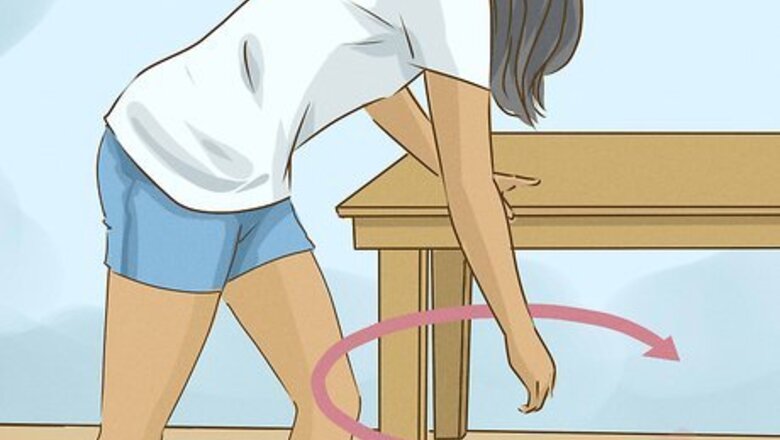
views
X
Research source
However, such freedom of movement results in a lot of wear and tear, which often leads to injuries and pain. While many areas of the body are prone to frequent injury, shoulder injuries are perhaps the most difficult to deal with. This is especially true if you work out on a regular basis. However, you may still be able to work out with an injury as long as you consult with your doctor, start off by restoring basic function, and then work up to strengthening exercises. There are also many safety measures you can take to keep from worsening the injury.
Improving Stability and Mobility
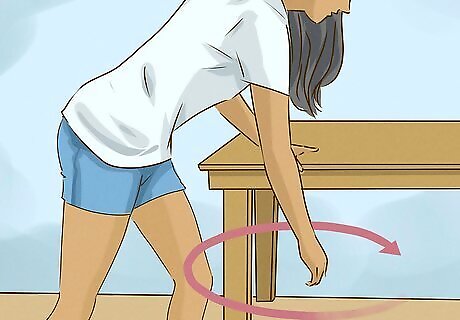
Try the pendulum exercise. It’s important to start with exercises that will help restore basic function in your shoulder, such as the pendulum, before moving on to gaining shoulder strength. Lean forward against a table and hold up your weight by bracing the table with one arm. Let the other arm hang freely by your side and swing it gently back and forth, side to side, and round in circles. Do 2 sets of 10 pendulum repetitions 5-6 days a week.
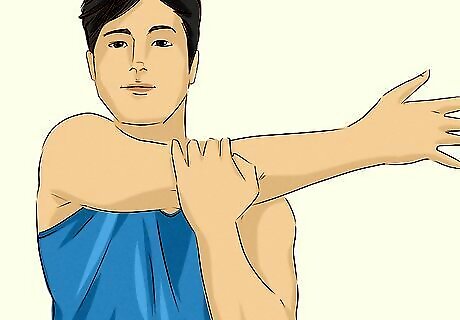
Do a crossover arm stretch. You can also improve your shoulder’s condition by stretching it correctly. The crossover arm stretch gently pulls the muscles around the shoulder, which helps the shoulder to develop a wider range of motion. Relax your shoulders and pull one arm across your body. Hold the arm in place with your other arm for about 30 seconds. Rest for 30 seconds. Perform this stretch 5 or 6 days each week for 4 repetitions.
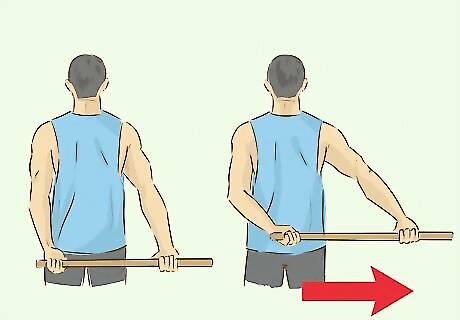
Use a yardstick to do passive internal rotation. With just a yardstick, you can do this exercise to improve your shoulder’s internal mobility. Hold the end of the yardstick in one hand behind your back and lightly grasp the other end with your other hand. Pull the stick horizontally in one direction for 30 seconds to gently stretch the shoulder. #*Relax for another 30 seconds. Do this 4 times a day for 5 or 6 days of the week.
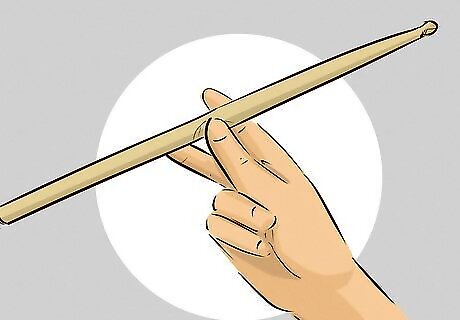
Work on passive external rotation. This exercise is similar to passive internal rotation, but instead positively affects internal mobility. Hold a yardstick horizontally in front of you and cup both ends with either hand. Push the yardstick horizontally from side to side slowly while keeping your elbows in next to your body. Once you’ve pushed the stick as far as you can to one side, hold the position for 30 seconds. Push the stick back in the opposite direction and hold the position for another 30 seconds.
Gaining Strength
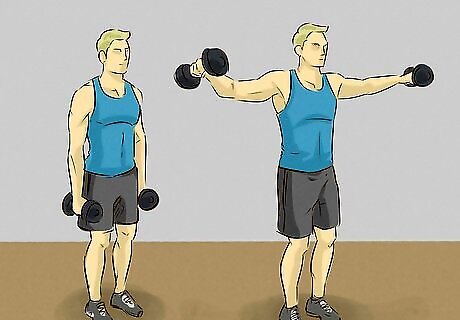
Perform lateral raises. Once you’ve gained more mobility and stability in your injured shoulder, do some lateral raises to get stronger. It’s safe to perform this exercise with an injured shoulder. Start with two appropriately weighted dumbbells in each hand. Bend your knees slightly, straighten your back, push out your chest a little bit, and keep your arms at your sides. Begin to slowly raise both of your arms — palms facing the ground — to the sides in a controlled motion. When your arms are parallel to the ground, begin lowering them until they are at your sides again.
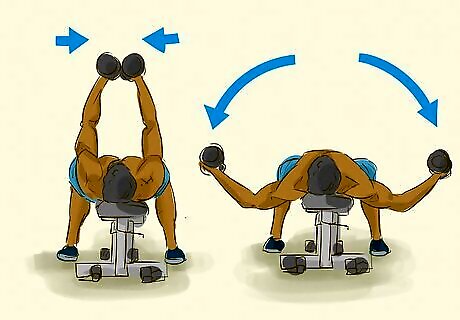
Do chest flyes. This is another exercise that can safely improve your strength. Flyes target the chest and use the shoulder muscles as a secondary and supportive muscle group. Lie on a bench with appropriated weighted dumbbells in each hand. Your feet should be firmly planted on the floor to help you stay balanced. Start with your arms extended out straight in front of you and up towards the ceiling. Your palms should be facing each other. Slowly lower your arms out away from your body. Keep a slight bend in your arms while you lower them. Stop when your arms are almost parallel to the floor. To make sure you do not hurt yourself with this particular exercise, keep your arms in front of your shoulder when you're lowering the weights. Also, do not stretch your arms below the level of your torso. Slowly bring your arms back up towards the ceiling and their starting position. Repeat as many times as you can without pain.
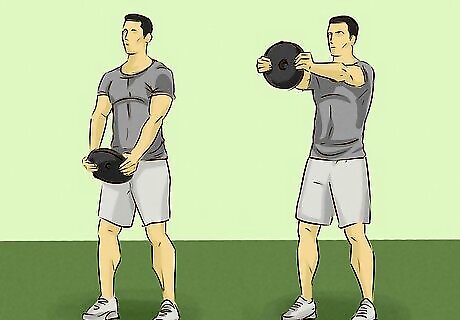
Perform front raises. The front raise works both the anterior and frontal part of the deltoid and can still be performed even with some of the worst shoulder injuries. Hold onto one plate instead of two individual dumbbells to help prevent further injury. Bend your knees slightly, straighten your back, push out your chest a little bit, and keep your arms at your sides. Grab an appropriated weighted plate with both hands. Slowly raise both of your arms in front of you in a controlled motion. The plate should remain straight. When your arms are parallel to the ground, begin lowering them until they are at your sides again. Do as many repetitions as you're able without pain.
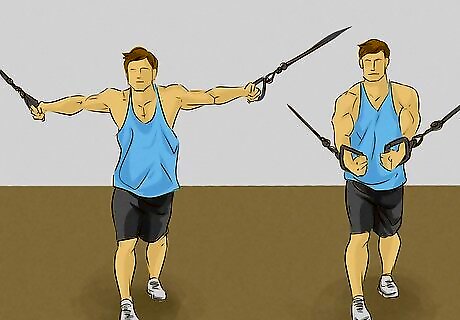
Perform cable crossovers. This exercise primarily targets the chest, with the shoulders helping stabilize your body. Since the shoulders are not the targeted muscle group, it shouldn't cause further injury. This exercise requires a cable machine. Set the weight on the cables to an appropriate weight for your condition. Stand up straight and relax with your arms resting in front of your hip bones. Keep your fists closed with the palms facing away from you. Slowly raise both of your arms to the sides holding the end of one cable in each hand, then in front of your head — as if you were doing a jumping jack — until your arms cross. In a slow, controlled motion, bring your arms back down to starting position. As a word of caution, crossovers may not be safe if your specific shoulder injury is aggravated by raising your arms over your head.
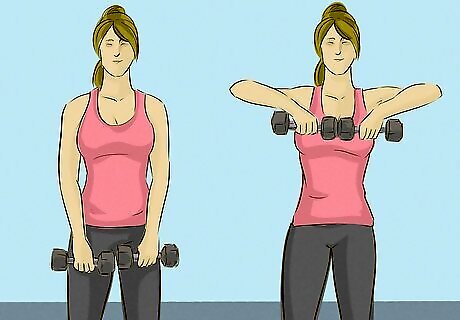
Include partial upright rows. This particular exercise targets your lateral and rear deltoid muscles and shouldn't cause too much pain in the shoulder joint. Stand straight up with feet hip-width apart. Hold an appropriate weighted dumbbell in each hand with your palms facing toward your body. Slowly bring your hands up to mid-chest or slightly underneath nipple level. As you raise your arms, bend your elbows out away from your body. Do not continue the movement all the way up to the top as this can aggravate your shoulder. Slowly lower your arms back down to the starting position. Repeat this exercise as many times as you're able without furthering injuring or hurting your shoulder.
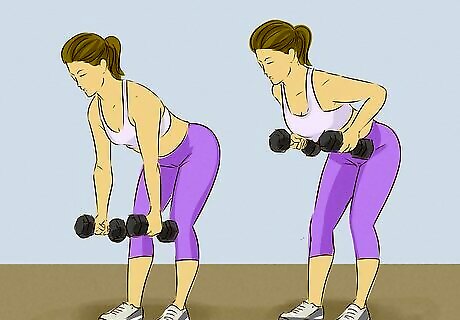
Incorporate bent over rows. This exercise focuses on strengthening the lateral muscles in your back. The shoulders are a secondary muscle group that provides support. Grab two appropriately weighted dumbbells holding one in each hand. Keep your arms at your sides with your palms facing in towards your body. Bend over at the waist until your torso is almost parallel with the floor. Ensure to keep your back stiff and straight while allowing your arms to hand relaxed in front of you. Slowly pull your arms up towards your body until your upper arms are parallel to the floor. Bend your elbows so that your arms are flushed with the side of your body. Slowly lower your arms back down to the starting position and repeat as many times as you're able without pain.
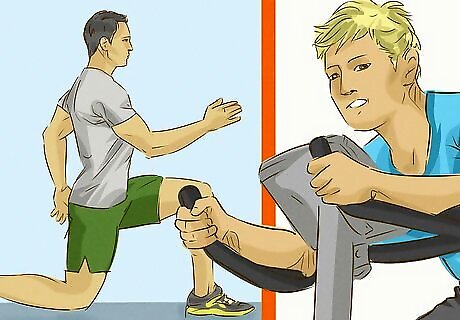
Continue with cardio and lower body exercises. Just because your shoulder is injured, doesn't necessarily mean that you have to be totally inactive. As long as it doesn't cause you pain, continue with your cardio and lower body exercises. Most health professionals will recommend that you do 2 1/2 hours of moderate intensity cardio activities each week. Focus on activities that do not require you to use your shoulders. Walking, slow jogging, cycling on a recumbent or upright (without leaning forward on your hands) bike or using the stair master should all be OK. However if any cardio hurts your shoulder, do not continue to do it. Many lower body exercises do not require you to use your shoulders or any part of your upper body. Exercises like lunges, squats or leg lifts should be OK. Again, if it hurts your shoulder do not continue.
Working Out Safely

Talk to your doctor. Whenever you're injured, have recurrent pain, or are restarting exercise after a healed injury, it's always important to talk to your doctor. Ask your physician about the amount and extent of activity you can do, and about how long recovery should take. Your doctor may recommend resting the joint for a specified period of time before exercising it again. Depending on your injury, your doctor may even recommend keeping the shoulder still in a sling to give it a chance to heal. Even if your injury wasn't serious or complex, you always need to get a medical clearance from your doctor prior to restarting any type of physical activity. She will be able to tell you whether or not exercise is safe and appropriate for you. Your doctor may have you apply heat and/or ice to the shoulder and also take an anti-inflammatory medication to ease inflammation. In addition, keep in touch with your doctor about your injury. She will want to know if everything is OK, whether or not exercise is easy or difficult or if you're having continued or worsening pain.

If your pain comes back or worsens, discontinue exercise and contact your physician immediately. If the pain is worsening, imaging may be ordered or you may need a referral to a therapist (physiotherapist or chiropractor).
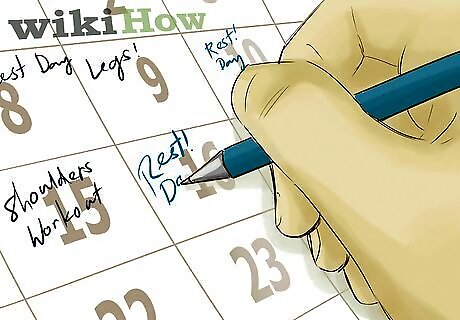
Include the appropriate amount of rest days. Even without an injury, including regular rest and recovery days is important to any type of physical activity routine. It may be more important if you have an injury. When you're cleared for activity, it's important to take it slow and easy. You will need to include regular rest days as you ease yourself back into your normal exercise routine. The shoulder joint involves a lot of ligaments, tendons and muscles. When its been injured and has been less active, you may feel some soreness once you restart activity. Soreness is generally considered OK after an injury. However, when you feel sore, you want to include at least 24 – 48 hours of rest before exercising your shoulder again. You need rest and recovery in order for the muscle to continue to heal and to rebuild strength.
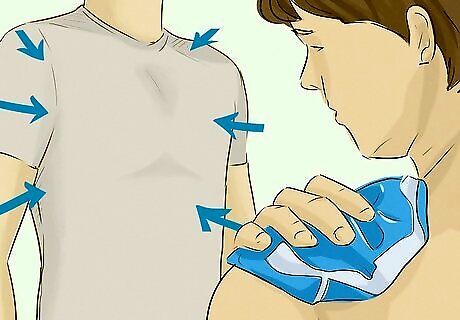
Take extra precautions. When you restart your typical exercise routine, take extra precautions with your shoulder. Being extra careful can help you prevent further injury to your shoulder. Ice it. If you're feeling a little sore or just as an extra safety net, ice your shoulder after you exercise. Icing can help prevent inflammation and swelling. Also use compression shirts or wraps. Like ice, this can reduce inflammation and swelling in your shoulder and help keep your shoulder in place. Use proper form. This is always important for all types of exercise, but definitely important when you're recovering from an injury. If you do not use the correct form, you risk re-injuring or worsening your current shoulder injury.
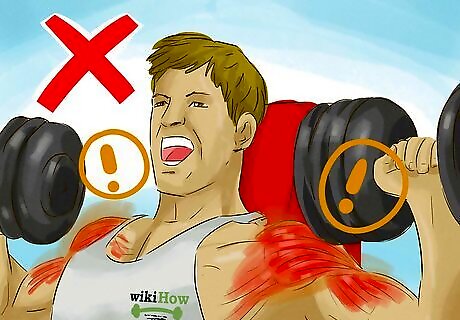
Avoid exercises that increase or worsen pain. Do not continue with or start any exercise that causes your shoulder any pain. This can worsen your injury. There are a few particular exercises that are recommended to avoid while recovering from a shoulder injury including: overhead presses, incline bench press, upright rows above shoulder level, dumbbell side lifts and lateral pull downs behind your neck.

















Comments
0 comment